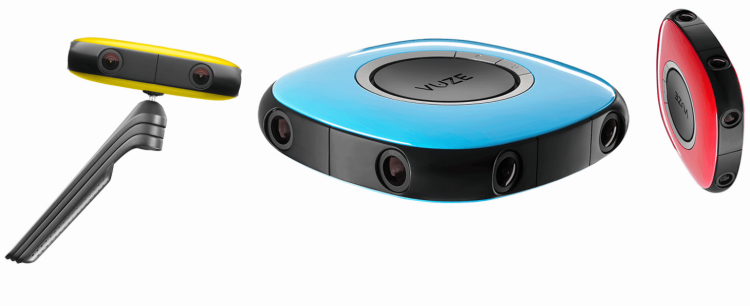A number of new virtual reality (VR) headsets and technologies went to market in 2016, but without content, VR viewers are little more than futuristic-looking ski goggles. And this is why we’re starting to see a number of VR cameras enter the fray, including Nokia’s $45,000 Ozo, Facebook’s $30,000 Surround, GoPro’s $15,000 Odyssey, and upstarts such as Hubblo, which launched its $1,000 camera just yesterday.
Last year, a new VR Camera from Humaneyes Technologies was announced. At a more palatable $800, the Vuze camera has been available for preorder for more than six months and was originally expected to start shipping in late 2016. The deliveries never materialized, however, and preorders have remained open in the intermittent months. At CES in Las Vegas this week, Humaneyes revealed that the first commercial units will finally begin shipping on March 7, 2017.
By way of a quick recap, the Vuze camera captures and renders 3D and 2D VR content, using 8 FHD (full high-definition) cameras, and it automatically optimizes captured content for any platform or VR headset. At 12x12x3cm, the Vuze is a fairly portable “point-and-shoot” VR camera, and it also ships with a VR headset, tripod, and software.

Above: Vuze
In the months in which the early buyers have been waiting for their cameras to arrive, the company has added a number of new smarts to the software, including 3D audio capabilities and a partnership with WakingApp that will allow users to edit VR and AR content. The device is basically pitched as an all-in-one affordable suite for budding VR creators.
Audio is, of course, integral to the VR experience, and competitors such as Facebook and Oculus have also been beefing up their VR audio smarts. So the 3D audio is a particularly key addition to the Vuze Camera. At launch, the VR Studio software will use four spatially offset microphones to provide “advanced 3D audio modeling,” according to a company statement.
“The influx of user-generated VR content, made possible by the Vuze camera, will stimulate adoption of VR headsets across the industry,” explained Jim Malcolm, general manager of Humaneyes. “These new owners of VR headsets can now create immersive 3D-360 VR experiences, complete with advanced 3D audio and AR integration, without having to learn complicated computer programming languages.”
Founded out of Israel in 2000, Humaneyes says it holds more than 70 patents across the 3D spectrum. The Vuze camera is the result of more than two years of R&D at the Hebrew University in Jerusalem, and by pricing it at $800, the company hopes to make VR an affordable pursuit for hobbyists and professional filmmakers alike.


